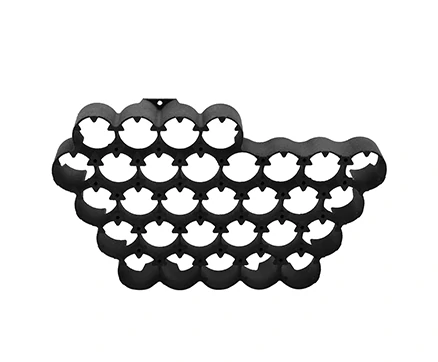Time to read: 6 min

Understanding Sintering Meaning
Sintering is a manufacturing process where powders are heated to a temperature below their melting point, causing the particles to fuse together without melting. This process is crucial in powder metallurgy, metal injection molding (MIM), and the production of ceramics and composites.
The Sintering Process Explained
The sintering process involves three stages:
- A powder blend with a bonding agent is shaped into the desired form.
- The green part is fired, causing the bonding agent to evaporate or burn away.
- The temperature rises to fuse the particles, either by partial melting or through an intermediate bonding agent.
Types of Sintering
Sintering encompasses various methods, including:
- Solid-State Sintering: Heating below the melting point, bonding particles through atomic diffusion.
- Liquid Phase Sintering: Using a solvent liquid to create a solid with low porosity.
- Reactive Sintering: Chemical reactions during heating alter the chemistry for particle coupling.
- Microwave Sintering: Using microwaves for faster and more complete integration.
- Spark Plasma Sintering: Electric current and physical compression for powder integration.
- Hot Isostatic Pressing: High pressure and temperature to form and fuse particles.
- Cold Sintering: Using solvents and pressure to consolidate polymer powders.
Materials Used in Sintering
Sintering is applicable to a broad range of materials, including:
- Metals: Various steels, brass, bronze, and magnetic alloys.
- Ceramics: Alumina, aluminum nitride, zirconia, and silicon carbide.
- Polymers: Polyethylene, polypropylene, and polytetrafluoroethylene.
- Composites: Tungsten carbide, glass, carbon, and metal fibers.
- Glass: Ceramic glazes, silica glass, and sintered glass slabs.
Steps of the Sintering Process
Sintering involves precise control over composition, compression, and heating to achieve the desired part properties.
Components Produced Through Sintering
Sintering is used to produce automotive parts, electrical components, cutting tools, aerospace components, and biomedical implants.
Benefits of Sintering
Sintering offers benefits such as high repeatability, cost-effective large-scale production, and the ability to create non-machinable geometries.
Risks in Sintering
The process also carries risks, including variability in powder consistency, precise control requirements for initial forming, and high costs associated with establishing production.
unofactory: Your Partner in Sintering Services
unofactory provides a comprehensive range of manufacturing capabilities, including sintering. Our expertise ensures that your parts meet the highest quality standards, leveraging the excellent properties of sintered materials.
Conclusion
Sintering is a critical process in manufacturing, offering a wide range of applications and materials. Understanding the meaning of sintering and its implications in material science is essential for selecting the right process for your manufacturing needs. unofactory is committed to providing the highest quality sintering services, ensuring your parts are manufactured to exact specifications.




